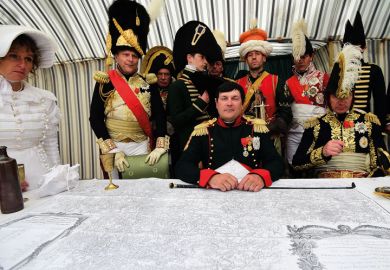Australia has made steady but slow progress this decade towards achieving gender balance at the top levels of university administration.
An analysis by the University of Canberra’s 50/50 by 2030 Foundation has found that women have increased their representation on university governing bodies from about 38 per cent in 2010 to 43 per cent this year.
Ten Australian chancellors are female, up from nine a decade ago, along with 11 vice-chancellors – compared with six in 2010. Women now constitute about 38 per cent of universities’ senior executives, up from 30 per cent in 2010.
The analysis was conducted by Julie Hare, a journalist who is an editor with the foundation and an honorary fellow with the Melbourne Graduate School of Education at the University of Melbourne.
Ms Hare said female representation in university leadership was “pretty good” compared with other sectors, but should be better. “The university workforce is feminised – the majority of people who work in universities are women, and the majority of students are women,” she continued.
“Universities are very proactive in affirmative action policies. They’ve been way ahead of the curve for many years on things like paid parental leave. They are the experts in this stuff, so they should be better at it.”
Ms Hare said that while she was not necessarily advocating quotas, the idea warranted discussion: “There needs to be conscious oversight of the make-up of senior executives and university councils.”
She conceded that universities did not have total control of the composition of their councils and senates, with some members elected and others appointed by state governments. Nevertheless, “it needs to be front of mind”, she said.
“The universities that do well in this area are the universities that think about it. The ones that don’t think about it do badly. I don’t think it’s malicious; they just haven’t really thought about it, so they kind of revert to the status quo, which is all blokes. We know there is a strong business case for diversity on corporate boards, university boards, not-for-profit boards – all boards.”
The analysis found that women had only modestly better odds of leading university governing bodies than people called John – the first name of six current chancellors, up from four a decade ago.
Women constituted a majority of deputy vice-chancellors in charge of academic programmes but only about two-fifths of those overseeing research, one-third of those heading corporate programmes and one-quarter of those leading international programmes.
Ms Hare said 15 Australian universities had never had a female vice-chancellor and five had never had a female chancellor or vice-chancellor. And when the University of Western Australia’s incoming vice-chancellor Amit Chakma replaces interim head Jane den Hollander in July, all of the Perth institution’s senior executives will be male.
Professor den Hollander said a lack of diversity had “recently returned after a time when things were otherwise, reminding us that we can never be complacent”.
“We are addressing the matter with a recent appointment of a woman as a permanent member of the executive and another about to join the executive shortly,” she explained. “Without seeking to bind my successor’s decision-making, I hope that future appointments consider the importance of diversity in all its aspects.”
Ms Hare said that while Covid-19 was unlikely to significantly affect the gender make-up of university executives, it could disrupt the pipeline of future female leaders. “If women are publishing less during the pandemic because they’re being left with the lion’s share of unpaid care, you could extrapolate that their careers are going to fall even further behind,” she added.
Register to continue
Why register?
- Registration is free and only takes a moment
- Once registered, you can read 3 articles a month
- Sign up for our newsletter
Subscribe
Or subscribe for unlimited access to:
- Unlimited access to news, views, insights & reviews
- Digital editions
- Digital access to THE’s university and college rankings analysis
Already registered or a current subscriber?









